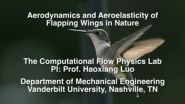(Press-News.org) ANN ARBOR--The medical community may be inadvertently creating a new generation of illegal, recreational drug users by prescribing anti-anxiety or sleep medications to teenagers, say University of Michigan researchers.
Teens prescribed anxiety or sleep medications are up to 12 times more likely to abuse those drugs than those who had never had a prescription, either by using someone else's prescription pills or to get high or experiment, according to a study from the U-M School of Nursing.
Nearly 9 percent of the 2,745 adolescent study participants had received a prescription for anxiety or sleep medications during their lifetime, and more than 3 percent received at least one prescription during the three-year study period.
"I recognize the importance of these medications in treating anxiety and sleep problems," said the study's first author Carol Boyd, the Deborah J. Oakley Professor of Nursing. "However, the number of adolescents prescribed these medications and the number misusing them is disturbing for several reasons."
Anxiety and sleep medications can be addictive or even fatal when mixed with narcotics or alcohol, said Boyd, who is also a professor of women's studies and research professor at the Institute for Research on Women and Gender and at the U-M Addiction Research Center in the Department of Psychiatry.
"What happened to [actor] Heath Ledger could happen to any teen who is misusing these medications, particularly if the teen uses alcohol in combination with these drugs," Boyd said.
Examples of anti-anxiety medications include Klonopin, Xanax and Ativan; sleep medications include Ambien, Restoril and Lunesta. These are controlled substances partly because of the potential for abuse, and it's a felony to share them, Boyd said.
The U-M study included students from five Detroit-area schools grouped into three categories: those never prescribed anxiety or sleep medications; those prescribed those medications within the three-year study period; and those previously prescribed those medications but not during the study period.
Key findings include:
Adolescents prescribed anxiety medications during their lifetime, but not during the study, were 12 times more likely to use someone else's anxiety medication than participants who had never been prescribed such drugs.
Those prescribed anxiety or sleep medications during the study period were 10 times more likely to abuse them within two years, to get high or to experiment, than teens without prescriptions.
White students were twice as likely as black students to use others' medications, and females older than 15 and teens who had prescriptions for longer periods of time were more likely to abuse the medications.
It's the first longitudinal study to determine whether teens' recent medical use of anxiety or sleep medications is associated with later taking somebody else's prescription medication illegally, either for self-treatment or recreational use.
Boyd said the group intended to write a paper about teens abusing their own prescriptions, but changed course when the results became clear.
"I looked at these numbers and said, 'There's a story here.' It just catches you off guard that so many adolescents are being prescribed these medications," Boyd said. "Why is it that our youth are anxious and sleepless? Is it because they are under stress, consuming too much caffeine or seeking an altered state? "
The study recommends better education for parents and adolescents prescribed these medications, monitoring refills and making it standard practice to give teens a substance use assessment before prescribing these drugs.
INFORMATION:
Boyd's co-authors include Elizabeth Austic, Quyen Epstein-Ngo, Philip Veliz and Sean Esteban McCabe of the U-M Institute for Research on Women and Gender. Epstein-Ngo also has appointments at the U-M Injury Research Center and Institute for Clinical and Health Research.
The study, "A prospective study of adolescents' nonmedical use of anxiolytic and sleep medication," appears in the American Psychological Association journal Psychology of Addictive Behaviors.
Carol Boyd
School of Nursing
Institute for Research on Women and Gender
A team of scientists from Arizona State University's Biodesign Institute and IBM's T.J. Watson Research Center have developed a prototype DNA reader that could make whole genome profiling an everyday practice in medicine.
"Our goal is to put cheap, simple and powerful DNA and protein diagnostic devices into every single doctor's office," said Stuart Lindsay, an ASU physics professor and director of Biodesign's Center for Single Molecule Biophysics. Such technology could help usher in the age of personalized medicine, where information from an individual's complete DNA ...
SAN FRANCISCO (November 24, 2014) --A team of scientists, including researchers from the California Academy of Sciences, has reconstructed a detailed "tree of life" for turtles. The specifics of how turtles are related--to one another, to other reptiles, and even to dinosaurs--have been hotly debated for decades. Next generation sequencing technologies in Academy labs have generated unprecedented amounts of genetic information for a thrilling new look at turtles' evolutionary history. These high-tech lab methods revolutionize the way scientists explore species origins and ...
Members of the public in sub-Saharan Africa who are carriers of the hereditary disease sickle cell disease must be educated aggressively through public health campaigns to raise awareness of the risks of parenting offspring with the disease if their partner is also a carrier, according to research published in the International Journal of Medical Engineering and Informatics.
There are many physical and emotional public health components of sickle cell disease, explains William Ebomoyi of the Department of Health Studies College of Health Sciences, Chicago State University, ...
A collaboration between NEC Electronics Samsung and several academic centres in China and Iran, is investigating how software-defined cellular networking might be used to give smart phone users the next generation of super-superfast broadband, 5G. They provide details in the International Journal of Communication Networks and Distributed Systems.
Currently, the fourth generation of mobile phone connection technology, 4G, in as far as it has been adopted provides broadband-type connectivity for enabled devices such as smart phones, tablet computers, laptops and other gadgets ...
WOODS HOLE, Mass.--David Johnson was standing in a salt marsh on the northern Massachusetts coast when he saw a fiddler crab, Uca pugnax, nearly 50 miles north of its supposed natural range. The migration north of this charismatic crab with the big, waving claw may be yet another sign of climate change. Johnson, then a scientist at the Marine Biological Laboratory (MBL) Ecosystems Center, has published his observations in the Journal of Crustacean Biology.
The fiddler crab is an attention-getting crustacean; the males have an oversized claw that they use to attract a ...
VIDEO:
The most detailed aerodynamic simulation of hummingbird flight conducted to date demonstrates that it achieves its aerobatic abilities through a unique set of aerodynamic forces more closely aligned to those...
Click here for more information.
The sight of a tiny hummingbird hovering in front of a flower and then darting to another with lightning speed amazes and delights. But it also leaves watchers with a persistent question: How do they do it?
Now, the most detailed, ...
Over a million US military veterans lacked healthcare coverage in 2012, according to new estimates published in The Lancet. While many people believe that all veterans are covered by the Veterans Affairs health care system, less than half (8.9 million) of the 22 million veterans in the US are covered by VA health benefits, and most veterans are covered by private health insurance. Uninsured veterans are more likely to be young, single, African American, and veterans of Iraq and Afghanistan.
However, the authors of this viewpoint estimate that universal health coverage ...
There has been a growing concern that modern society is increasingly lonely. In 2006, a New York Times article "The Lonely American Just Got a Bit Lonelier" highlighted research that shows a decline in social engagement--people are less likely to join clubs, have fewer close friends, and are less likely to perceive others as trustworthy. However, studies have also shown an increase in extraversion and self-esteem, which suggests loneliness is decreasing.
In an effort to study the societal trend of loneliness, researchers from the University of Queensland and Griffith ...
Abnormal connections between neurons are the likely cause of motor coordination issues seen in autism spectrum disorder. Using a mouse model of autism, scientists from the University of Chicago identified a malfunctioning neural circuit associated with reduced capacity for motor learning. This appears to arise from an inability to eliminate unneeded neural connections in the brain. They report their findings Nov. 24 in Nature Communications.
"We have identified synaptic abnormalities that may play a role in motor problems typically seen in children with autism," said ...
Adult survivors of retinoblastoma, a type of eye cancer that usually develops in early childhood, have few cognitive or social problems decades following their diagnosis and treatment. That's the conclusion of a study published early online in CANCER, a peer-reviewed journal of the American Cancer Society. The findings offer good news for patients, but it's important to continue to monitor for long-term effects as the brain changes throughout life.
While most children with retinoblastoma are successfully cured, little is known about the long-term health of survivors. ...



